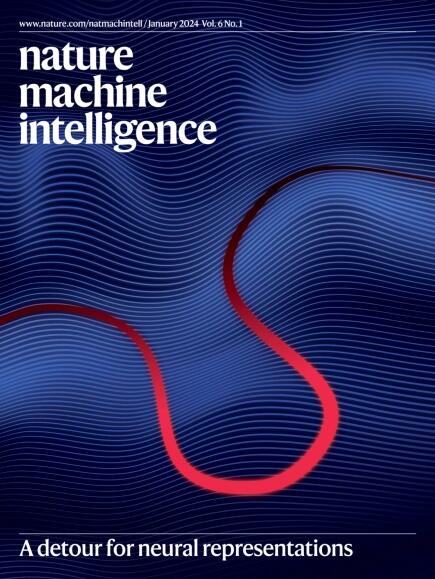利用注入立体电子的分子图推进分子机器学习表征
IF 23.9
1区 计算机科学
Q1 COMPUTER SCIENCE, ARTIFICIAL INTELLIGENCE
引用次数: 0
摘要
分子表征是我们理解物理世界的关键因素,也是现代分子机器学习的基础。以前的分子机器学习模型使用字符串、指纹、全局特征和简单的分子图,这些都是固有的信息稀疏表示。然而,随着预测任务的复杂性增加,分子表示需要编码更高保真度的信息。这项工作引入了一种新的方法,通过立体电子效应将富含量子化学的信息注入到分子图中,增强了表达性和可解释性。通过定制的双图神经网络工作流程来学习预测注入立体电子的表示,使其能够应用于任何下游分子机器学习任务,而无需昂贵的量子化学计算。我们表明,显式添加立体电子信息大大提高了用于分子性质预测的消息传递二维机器学习模型的性能。我们表明,在小分子上训练的学习表征可以准确地外推到更大的分子结构,从而对以前难以处理的系统(如整个蛋白质)的轨道相互作用产生化学见解,开辟了分子设计的新途径。最后,我们开发了一个web应用程序(simg.cheme.cmu.edu),用户可以在其中快速探索自己分子系统的立体电子信息。本文章由计算机程序翻译,如有差异,请以英文原文为准。


Advancing molecular machine learning representations with stereoelectronics-infused molecular graphs
Molecular representation is a critical element in our understanding of the physical world and the foundation for modern molecular machine learning. Previous molecular machine learning models have used strings, fingerprints, global features and simple molecular graphs that are inherently information-sparse representations. However, as the complexity of prediction tasks increases, the molecular representation needs to encode higher fidelity information. This work introduces a new approach to infusing quantum-chemical-rich information into molecular graphs via stereoelectronic effects, enhancing expressivity and interpretability. Learning to predict the stereoelectronics-infused representation with a tailored double graph neural network workflow enables its application to any downstream molecular machine learning task without expensive quantum-chemical calculations. We show that the explicit addition of stereoelectronic information substantially improves the performance of message-passing two-dimensional machine learning models for molecular property prediction. We show that the learned representations trained on small molecules can accurately extrapolate to much larger molecular structures, yielding chemical insight into orbital interactions for previously intractable systems, such as entire proteins, opening new avenues of molecular design. Finally, we have developed a web application (simg.cheme.cmu.edu) where users can rapidly explore stereoelectronic information for their own molecular systems. Boiko et al. enhance expressiveness and interpretability of molecular representation in graph neural networks by including quantum-chemical-rich information into molecular graphs.
求助全文
通过发布文献求助,成功后即可免费获取论文全文。
去求助
来源期刊

Nature Machine Intelligence
Multiple-
CiteScore
36.90
自引率
2.10%
发文量
127
期刊介绍:
Nature Machine Intelligence is a distinguished publication that presents original research and reviews on various topics in machine learning, robotics, and AI. Our focus extends beyond these fields, exploring their profound impact on other scientific disciplines, as well as societal and industrial aspects. We recognize limitless possibilities wherein machine intelligence can augment human capabilities and knowledge in domains like scientific exploration, healthcare, medical diagnostics, and the creation of safe and sustainable cities, transportation, and agriculture. Simultaneously, we acknowledge the emergence of ethical, social, and legal concerns due to the rapid pace of advancements.
To foster interdisciplinary discussions on these far-reaching implications, Nature Machine Intelligence serves as a platform for dialogue facilitated through Comments, News Features, News & Views articles, and Correspondence. Our goal is to encourage a comprehensive examination of these subjects.
Similar to all Nature-branded journals, Nature Machine Intelligence operates under the guidance of a team of skilled editors. We adhere to a fair and rigorous peer-review process, ensuring high standards of copy-editing and production, swift publication, and editorial independence.
 求助内容:
求助内容: 应助结果提醒方式:
应助结果提醒方式:


